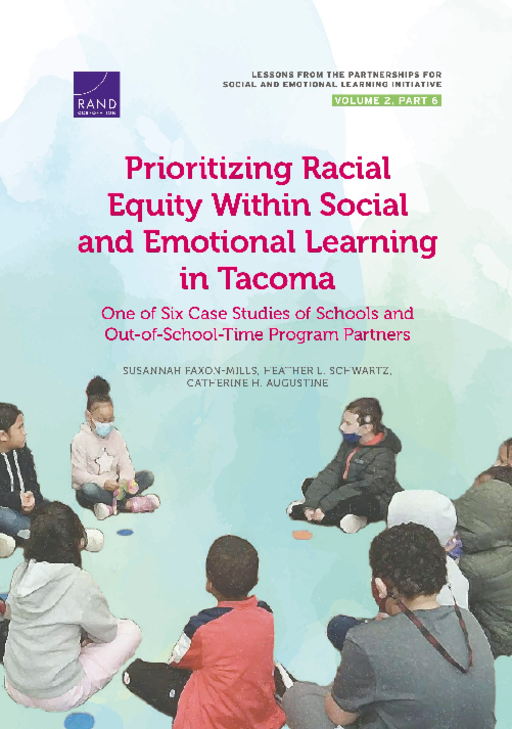- Author(s)
- Susannah Faxon-Mills, Heather L. Schwartz, and Catherine H. Augustine
- Publisher(s)
- RAND Corporation
- DOI Link
- https://doi.org/10.7249/RRA379-9
Research Approach
Researchers drew on a variety of data for this case study of Lister Elementary School in Tacoma.
Lister didn’t have OST programs on site until the second year of the four-year initiative. Then, the efforts were interrupted by COVID-19 pandemic in year three, shifting to a virtual model combining students from multiple schools. As a result, Lister’s partnership with OST programs was at an early stage or at an interrupted stage of development during most of the initiative. For that reason, the case study focuses on SEL during just the school day.
Data included:
- Observations of instructional time
- Observations related to staff meetings, additional classes, and other events
- A staff survey
- Interviews of the school principal and OST program director
- Interviews of teachers and OST program instructors
- Interviews of coaches, social and emotional learning (SEL) leads, and other SEL roles
- Interviews of non-instructional staff, such as cafeteria workers and secretaries
- Relevant documents
The case studies are part of a larger mixed-methods study that took place over four years in six cities. To select the cases, researchers first identified sites with unique, high-quality approaches to their SEL work based on interview and observation data from fall 2017 through spring 2019. They then proposed these as candidates for case studies to the district and OST leads of the Wallace-supported Partnerships for Social and Emotional Learning Initiative. They sometimes changed the site in response to the district and OST leads’ suggestions.
In fall 2019, researchers finalized the six case study sites. Each highlighted a particular aspect of the initiative, such as explicit SEL instruction or a strong school-OST partnership. They then expanded their data collection activities at each of these sites. That provided a more in-depth understanding of their approaches to SEL implementation.









